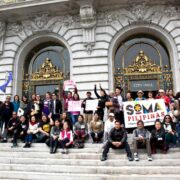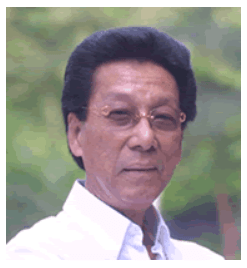
Filipinos have been a significant part of San Francisco and California’s history and society for more than a century, and a majority use Filipino (Tagalog) as a language. Not to mention the constant influx of Filipino immigrants from different regions in the Philippines with English as their second or even third language.
It is through language that our needs are conveyed and addressed in our daily lives and our society. Proficiency in a language can mean the difference in having our needs met, fighting for our rights, getting justice, understanding the impacts of ever-changing policies, and receiving benefits that are due to us.
Filipino (Tagalog) was officially certified as San Francisco’s third language spoken under the Language Access Ordinance by the Office of Civic Engagement and Immigrant Affairs (OCEIA) on April 2, 2014. It was then expected that all city departments providing information or services to the public were to fully implement required Filipino Language Access Services by December 31, 2015. But eight years have passed and the full implementation of Filipino Language Access Services by the city of San Francisco remains to be accomplished.
According to the findings published in the report, Speaking Up, Speaking Out: Recommendations for Implementation of Filipino Language Access in San Francisco (2018), prepared by Valerie Francisco-Menchavez, PhD of the Department of Sociology and Sexuality Studies, San Francisco State University in collaboration with the South of Market Community Action Network (SOMCAN), Filipinos in San Francisco are in dire need of language access services, Filipinos speak English but comprehend in Filipino, and there are institutional barriers to Filipino language access.
Along with these findings is the fact that Filipino community-based organizations are the ones providing the needed language access services that the city of San Francisco is unable to provide.
Although this can temporarily alleviate some of the lack in Filipino language access services, it comes at the expense of community-based organizations and workers.
These community-based organizations and workers are doing unpaid and unfunded “double-duty” on top of their community work by providing Filipino language access services that includes translating and interpreting city and governmental documents.
Community workers would go as far as accompany clients to city departments or become liaisons between clients and city workers due to the lack of translators and interpreters in city departments.
It is therefore highly recommended that the Language Access Ordinance be fully enforced with the use of multiple strategies to increase Filipino Language Access; that the work of community-based organizations in providing culturally-sensitive, linguistically-competent, and context-specific language services be recognized; that there should be a Filipino interpreter and translator workforce development program in place; and to generate public awareness of Filipino as a recognized language in San Francisco.
“It should be standardized. In translating documents, people should follow a particular style guide. I always propose that we use the style guide of the Komisyon sa Wikang Filipino (Commission on the Filipino Language),” says Dr. Joi Barrios-Leblanc, senior lecturer at UC Berkeley whose expertise is in Filipino language and literature.
Dr. Barrios-Leblanc consulted with the OCEIA and was instrumental in determining and agreeing on an official Filipino language style guide. She offers a medium term plan and a short term solution to address this issue along with the city having “to invest in programs that will develop knowledge” in Filipino language services.
The medium term plan is “to have courses in colleges and universities that teach the language sufficiently and will include translation and interpreting courses.”
The short term solution is through providing Filipino language translation and interpreting workshops and encouraging translators to use the official style guide in doing their work.
Dr. Barrios-Leblanc adds that it should be acknowledged that for some Filipino immigrants, “their own knowledge of Filipino (Tagalog) is not as good as their knowledge of their native languages.”
A big part of the problem is the assumed assimilability of Filipinos, that all Filipinos are fluent in English, and the lack of pride in Filipino language as a result of a colonial past. “[Filipinos] come to the U.S. with a lot of baggage in relation to language and class. That’s really the problem.”
More Filipinos should advocate and not be ashamed of needing Filipino Language Services. When a majority of Filipinos insist that they do not need Filipino Language Services, Filipinos will not get the services and support that is needed. Why would one expect the city of San Francisco to fund and implement something that seems not to be needed to begin with?
There is a dire need for Filipino Language Access Services in San Francisco. We strongly urge the city of San Francisco to fully implement Filipino Language Access Services. We also strongly urge Filipinos to be proud of their own language and get the language access services that they need and deserve.
* * *
The opinions, beliefs and viewpoints expressed by the author do not necessarily reflect the opinions, beliefs and viewpoints of the Asian Journal, its management, editorial board and staff.
* * *
Established in 2000, the South of Market Community Action Network (SOMCAN) is a multi-issue and multi-strategy organization that nurtures the lives of youth, families, individuals and workers. The organization works on a wide range of issues—from tenant rights to community planning to Filipino language access to workers rights—and provide culturally competent direct services ranging from tenant counseling to family support to youth empowerment to employment. For more information, visit www.somcan.org.






